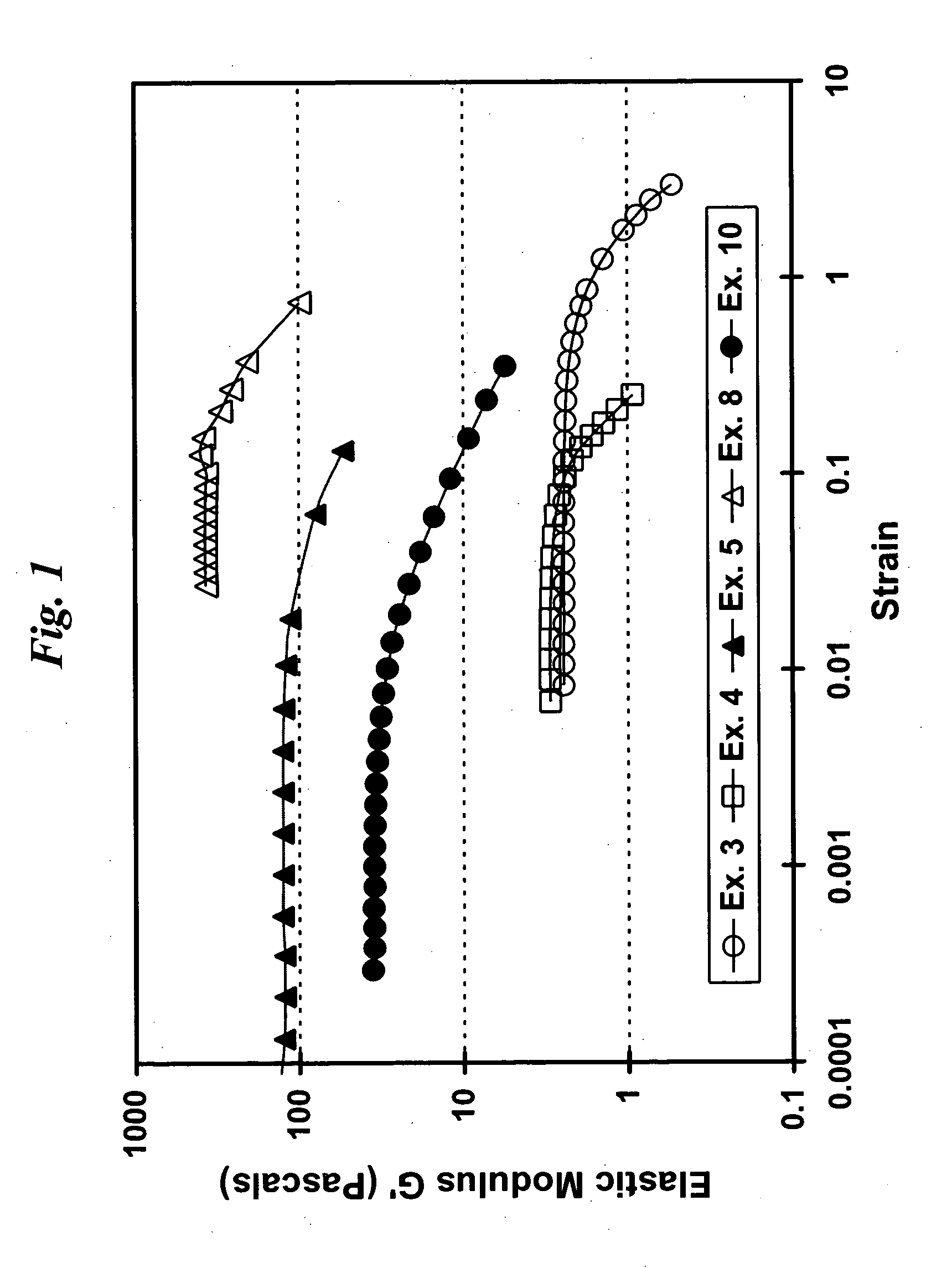Rheologically stabilized silicone dispersions
a silicone dispersant and rheological stabilized technology, applied in the field of aqueous dispersions of silicone oils, can solve the problems of reproducibility of the manufacturing process and instability of products, equipment and procedures are only able to reduce the average particle size, and the use of emulsifying surfactants is also problematic, so as to enhance the appearance, protect, and improve the effect of cleaning
- Summary
- Abstract
- Description
- Claims
- Application Information
AI Technical Summary
Benefits of technology
Problems solved by technology
Method used
Image
Examples
examples
[0163] Examples of embodiments of the inventive compositions are provided in Table I, which presents data detailing measured rheological parameters from stress sweeps across a range of polymers and polymer levels in compositions having the indicated level of silicone oil present. Samples were prepared by low shear mixing of the silicone oil into the aqueous polymer solution, preformed and adjusted to near neutral pH in accordance to the batch mixing strategy described herein. The example compositions all exhibited suitable physical stability, and demonstrate the ability of the selected polymers to provide rheological structure to the inventive compositions sufficient to form stable silicone oil dispersions. Example No. 2 exhibited single phase stability for over ten months storage at 70° F., and over 1 month at 120° F. Example No. 3 exhibited single phase stability for about 1 day at 70° F., thereafter separating into two liquid phases. However, after gentle shaking by hand for abou...
PUM
| Property | Measurement | Unit |
|---|---|---|
| Elastic Modulus | aaaaa | aaaaa |
| weight percent | aaaaa | aaaaa |
| weight percent | aaaaa | aaaaa |
Abstract
Description
Claims
Application Information
 Login to View More
Login to View More - R&D
- Intellectual Property
- Life Sciences
- Materials
- Tech Scout
- Unparalleled Data Quality
- Higher Quality Content
- 60% Fewer Hallucinations
Browse by: Latest US Patents, China's latest patents, Technical Efficacy Thesaurus, Application Domain, Technology Topic, Popular Technical Reports.
© 2025 PatSnap. All rights reserved.Legal|Privacy policy|Modern Slavery Act Transparency Statement|Sitemap|About US| Contact US: help@patsnap.com

